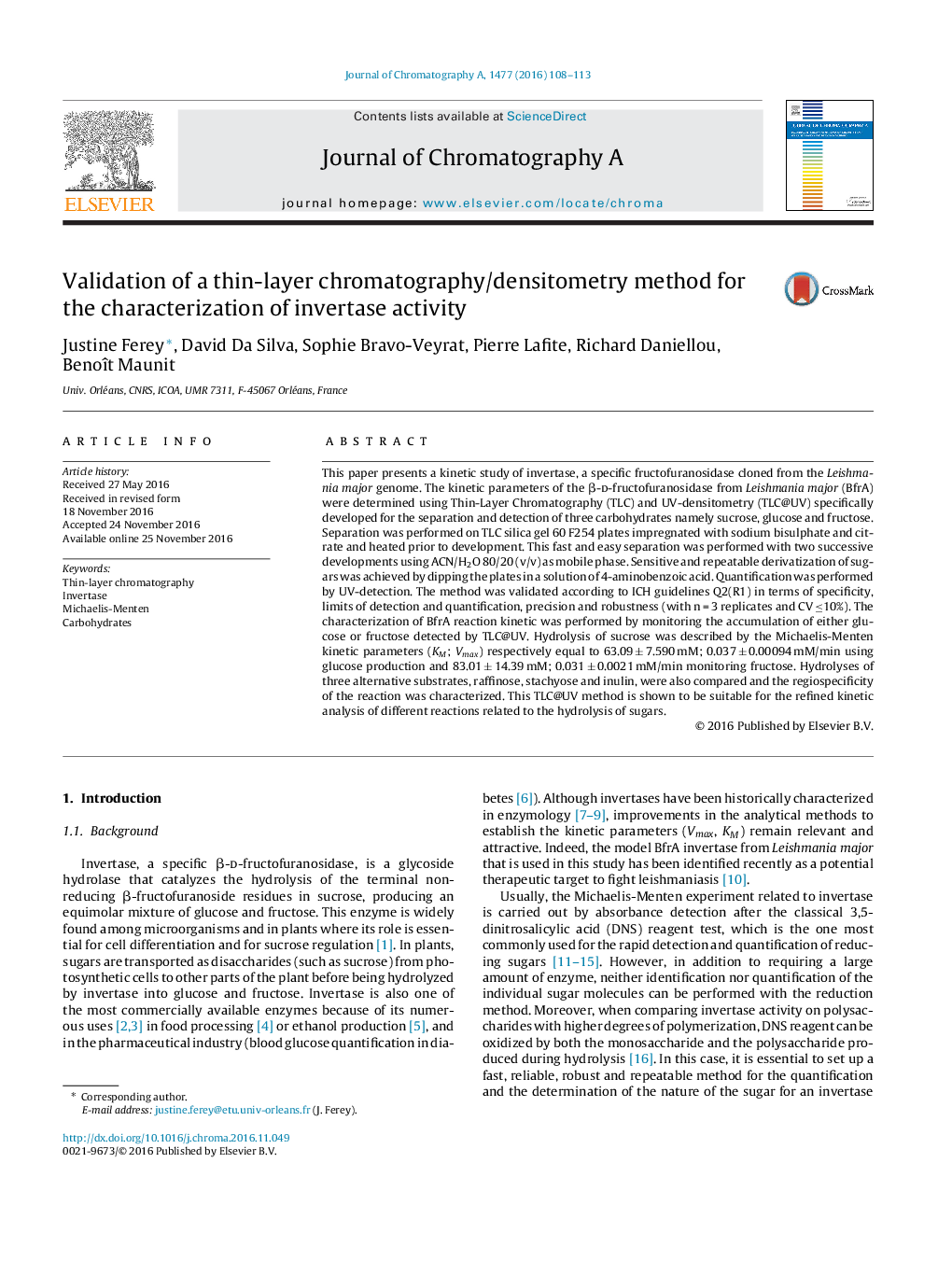| کد مقاله | کد نشریه | سال انتشار | مقاله انگلیسی | نسخه تمام متن |
|---|---|---|---|---|
| 5136005 | 1493449 | 2016 | 6 صفحه PDF | دانلود رایگان |

- Sucrose, glucose and fructose are separated and quantified by thin-layer chromatography.
- The kinetic parameters of BfrA are accurately determined by TLC@UV.
- The substrate specificity of BfrA is established on different monosaccharides.
This paper presents a kinetic study of invertase, a specific fructofuranosidase cloned from the Leishmania major genome. The kinetic parameters of the β-d-fructofuranosidase from Leishmania major (BfrA) were determined using Thin-Layer Chromatography (TLC) and UV-densitometry (TLC@UV) specifically developed for the separation and detection of three carbohydrates namely sucrose, glucose and fructose. Separation was performed on TLC silica gel 60 F254 plates impregnated with sodium bisulphate and citrate and heated prior to development. This fast and easy separation was performed with two successive developments using ACN/H2O 80/20 (v/v) as mobile phase. Sensitive and repeatable derivatization of sugars was achieved by dipping the plates in a solution of 4-aminobenzoic acid. Quantification was performed by UV-detection. The method was validated according to ICH guidelines Q2(R1) in terms of specificity, limits of detection and quantification, precision and robustness (with n = 3 replicates and CVââ¤10%). The characterization of BfrA reaction kinetic was performed by monitoring the accumulation of either glucose or fructose detected by TLC@UV. Hydrolysis of sucrose was described by the Michaelis-Menten kinetic parameters (KM; Vmax) respectively equal to 63.09 ± 7.590 mM; 0.037 ± 0.00094 mM/min using glucose production and 83.01 ± 14.39 mM; 0.031 ± 0.0021 mM/min monitoring fructose. Hydrolyses of three alternative substrates, raffinose, stachyose and inulin, were also compared and the regiospecificity of the reaction was characterized. This TLC@UV method is shown to be suitable for the refined kinetic analysis of different reactions related to the hydrolysis of sugars.
Journal: Journal of Chromatography A - Volume 1477, 16 December 2016, Pages 108-113